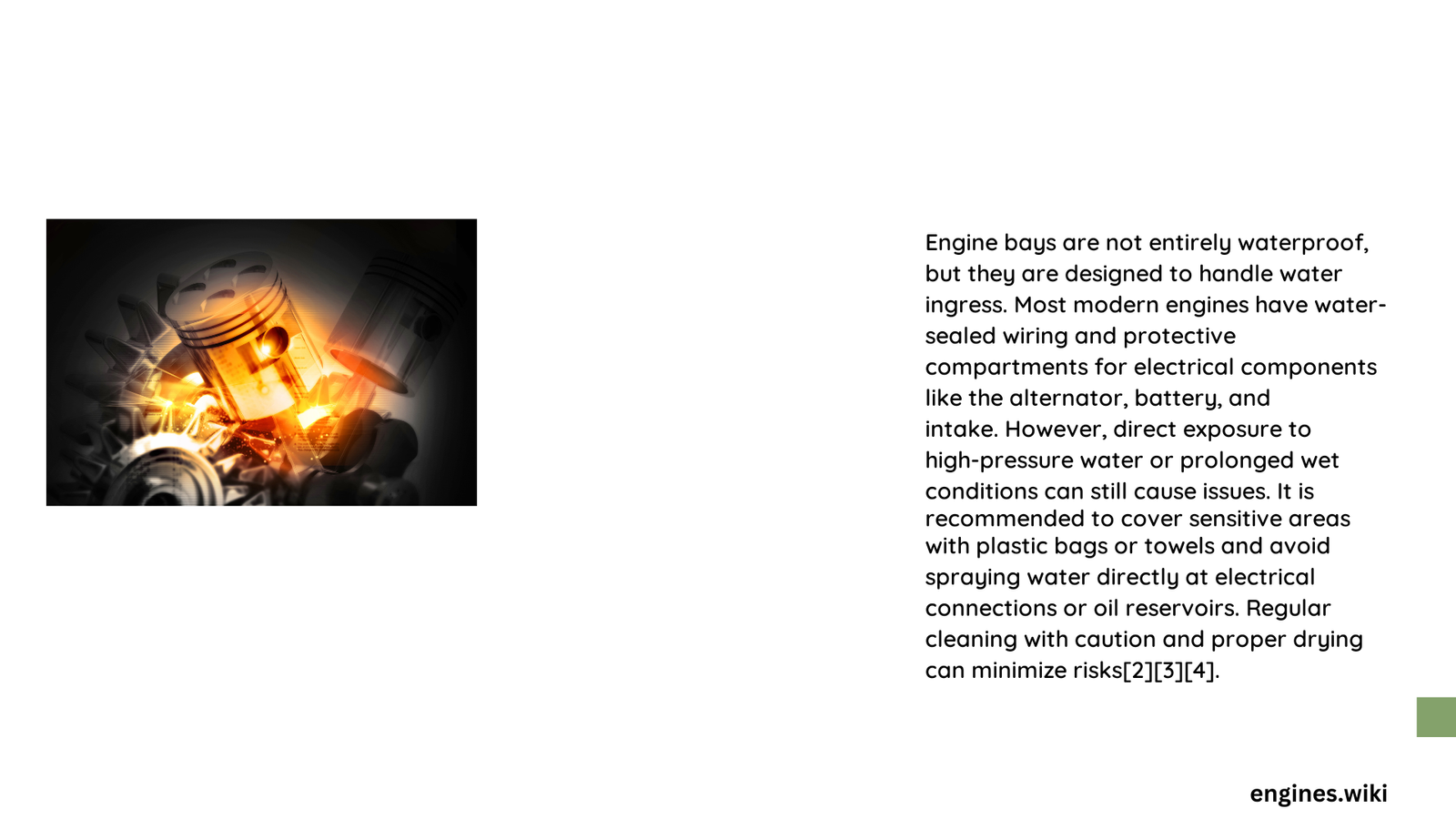Vehicle engine bays are complex environments that face constant exposure to moisture, water splashes, and environmental challenges. While not inherently waterproof, strategic protection methods can significantly reduce water intrusion risks and prevent potential damage to critical engine components. Understanding the nuanced relationship between water and engine bay design is crucial for long-term vehicle maintenance and performance.
What Makes Engine Bays Vulnerable to Water?
Engine bays are intentionally designed with multiple openings to facilitate critical functions:
- Airflow Requirements: Engines need constant air circulation for cooling
- Ventilation Openings: Multiple entry points for air and potential water
- Mechanical Movement: Suspension and driving dynamics create water entry opportunities
How Do Water Risks Impact Engine Components?
Water intrusion can cause significant damage to various engine bay elements:
| Component | Potential Water Damage | Estimated Repair Cost |
|---|---|---|
| Electrical Wiring | Short circuits | $500 – $2,000 |
| Electronic Sensors | Corrosion and failure | $200 – $800 |
| Metal Components | Rust and structural degradation | $300 – $1,500 |
What Protection Strategies Minimize Water Damage?

Can Silicone Sealants Provide Effective Protection?
Silicone-based solutions offer targeted water resistance:
- Precision Sealing: Ideal for small gaps and electrical connections
- Temperature Resistance: Maintains effectiveness in extreme conditions
- Cost-Effective: Relatively inexpensive protection method
Where Should Water Protection Focus?
Critical areas requiring concentrated water protection include:
- Electrical connection points
- Exposed wiring harnesses
- Sensor connection interfaces
- Potential gap areas around engine components
What Professional Techniques Enhance Water Resistance?
Can Professional Modifications Improve Protection?
Professional techniques include:
- Custom fabricated splash guards
- Strategic rubber coating applications
- Advanced sealant technologies
- Precision gap filling techniques
What Are Long-Term Maintenance Recommendations?
How Can Owners Prevent Water Damage?
Recommended maintenance practices:
- Regular visual engine bay inspections
- Immediate addressing of any detected moisture points
- Annual professional assessment of water protection measures
- Using high-quality, temperature-resistant sealants
Technical Insights on Water Interaction
Water’s interaction with engine bays involves complex dynamics:
- Thermal Expansion: Temperature changes affect material interactions
- Capillary Action: Water can travel through microscopic pathways
- Electrochemical Reactions: Moisture accelerates potential corrosion processes
Conclusion: Proactive Protection Matters
While engine bays are not inherently waterproof, strategic interventions can dramatically reduce water-related risks. Owners should view water protection as an ongoing maintenance priority.
Key Takeaways
- Engine bays require deliberate water protection strategies
- Multiple protection techniques exist
- Regular maintenance is crucial
- Professional assessment provides comprehensive protection
Expert Recommendations
- Invest in quality sealants
- Perform regular inspections
- Address moisture points immediately
- Consider professional water resistance modifications
Reference:
1. Ford Truck Enthusiasts Forums
2. JL Wrangler Forums
3. Expedition Portal
